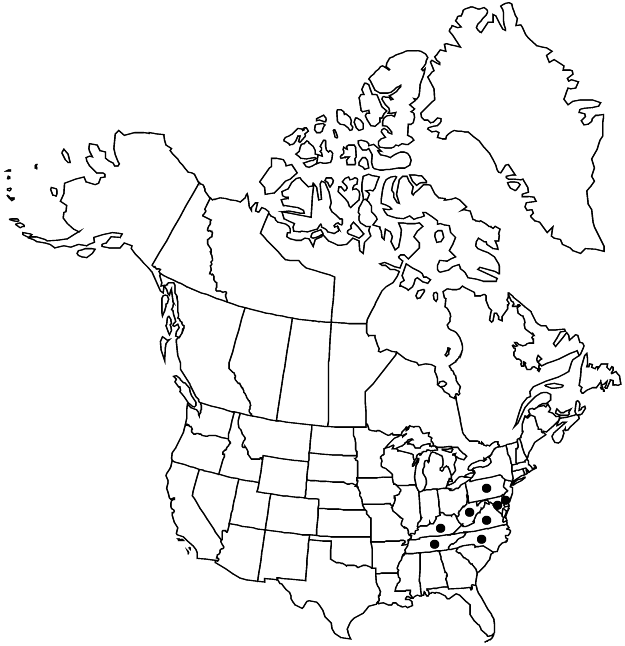Gaylussacia brachycera
Mem. Amer. Acad. Arts, n. s. 3: 54. 1846 ,.
Plants 2–4 dm, forming small to extensive colonies; branches spreading or procumbent; twigs of current season pale green to grayish brown, (strongly angled), puberulent. Leaves persistent; petiole 0.5–3 mm; blade pale green abaxially, shiny dark green adaxially, ovate, 1–2.5 × 0.5–1.3 cm, coriaceous, base rounded, margins crenate or serrulate, (revolute), apex obtuse, without resinous dots, surfaces glabrous adaxially, glabrous or puberulent along midvein and near blade base. Inflorescences spreading, 2–5-flowered, sometimes flowers solitary, ebracteate, 0.5–1 cm, puberulent. Pedicels 0.5–3 mm, glabrous; bracteoles (early deciduous), 1–3, (ovate), 2–4 mm, (margins ciliate). Flowers: sepals 4–5, 0.3–0.5 mm, glabrous; petals 4–5, corolla white to pink, campanulate-urceolate, 4 mm, lobes broadly deltate to rounded, 0.5–1.5 mm; filaments 1–1.5 mm, glabrous; anthers included, 1–1.5 mm, thecae not divergent distally; ovary glabrous. Drupes juicy, sweet, light blue, 6–8 mm diam., glabrous. Seeds 1–1.5 mm.
Phenology: Flowering late spring–early summer.
Habitat: Upland or montane woods
Elevation: (10-)200-1000 m
Distribution

Del., Ky., Md., N.C., Pa., Tenn., Va., W.Va.
Discussion
Gaylussacia brachycera is a dwarf evergreen shrub that forms large, solid-mat, self-sterile colonies, each one appearing to consist of a single clone that may extend over more than one hectare. One colony in Perry County, Pennsylvania, is about 1.5 kilometers wide; it appears to be a single clone that is over 12,000 years old and has been labeled as the oldest living thing in the world.
Selected References
None.
Lower Taxa
"entire" is not a number.